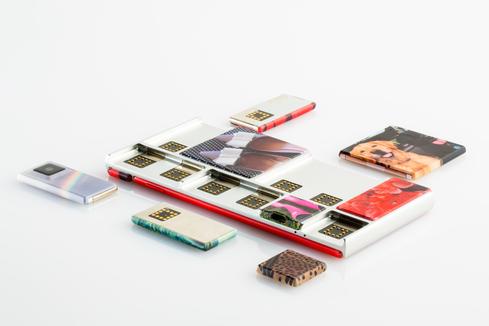Samsung Smartphones Lose Ground In 2014Samsung Smartphones Lose Ground In 2014
Samsung's smartphone marketshare retreats as Chinese vendors turn up the heat.


Google Project Ara: 8 Dev Conference Images
Google Project Ara: 8 Dev Conference Images (Click image for larger view and slideshow.)
Samsung's galaxy of smartphones contracted sharply during 2014. The company may still own the market, but the decline is notable after Samsung enjoyed several years of strong growth. Apple and several other competitors maintained their positions in the market, but Chinese handset makers are nipping at their heels.
Worldwide smartphone shipments reached 1.17 billion units during 2014, according to data from TrendForce. Of those, 453.4 million -- 40% of the total -- came from Chinese vendors, which represented six of the top ten phone makers. Samsung shipped about 326.4 million units, giving it 28% of the global market. That represents an annual growth rate of only 8.4% and a drop from its 2013 market share of 32.5%.
Competitors pummeled Samsung from every direction. Apple challenged Samsung's leading Galaxy Note phablets with the iPhone 6 Plus, while Samsung's entry-level and mid-range devices were sidelined by low-cost Chinese brands. Samsung reduced smartphone shipment forecasts several times during 2014, recorded a 60% drop in profits during the third quarter, and warned of a similar drop for the fourth quarter. The turn of fortune has caused some soul-searching in Seoul. The company rearranged its electronics business units late last year, folding its mobile software unit into the phone business and shuffling dozens of executives.
[ Is Samsung ditching Android for Windows Phone? Read Samsung Ponders Move To Windows Phone. ]
Apple had a better year. iPhone shipments, which slowed during the second and third quarters, took off once the iPhone 6 and iPhone 6 Plus hit store shelves. Trendforce pegs Apple's yearly iPhone shipments at about 191.3 million units, giving it a high growth rate of 24.5% and 16.4% of the market. Apple's rank as the second-largest maker of smartphones remained unchanged compared to 2013, as did its percentage of the market.
Lenovo and LG displaced Huawei to take the number three and four positions in the global top 10, respectively. Lenovo, thanks to its acquisition of Motorola in October 2013, shipped more than 90 million handsets and earned 7.9% of the market. Lenovo's growth rate surpassed a staggering 100%. LG wasn't too far behind, with shipments of 70 million and a marketshare of 6%. TrendForce pegged LG's annual growth rate at 75.4%.
Huawei dropped to fifth place but was right behind LG, with shipments of just under 70 million and a marketshare of 5.9%. Its growth rate was solid at 70%.
Looking forward, TrendForce sees good times ahead for the Chinese vendors. TrendForce believes Samsung will see its share of the smartphone market erode further to about 26.4%, while Apple will hold steady at 16.4%. By the end of 2015, TrendForce predicts Lenovo, Huawei, and Xiaomi will rank third, fourth, and fifth, respectively, with marketshares of 7.4%, 6.6%, and 6.5%.
Samsung's next move will be a significant one. It is widely expected to debut the Galaxy S6 at the Mobile World Congress trade show in March. The S6 may be a significant departure from earlier models as Samsung hopes to further differentiate its products from the competition.
Apps will make or break the tablet as a work device, but don't shortchange critical factors related to hardware, security, peripherals, and integration. Get the Tablets For Business issue of information Tech Digest today. (Free registration required.)
About the Author
You May Also Like






